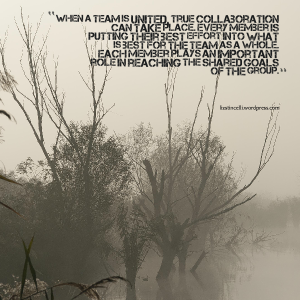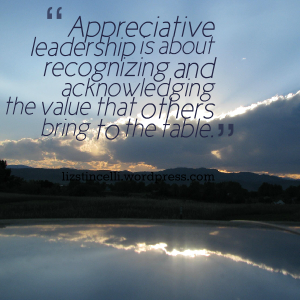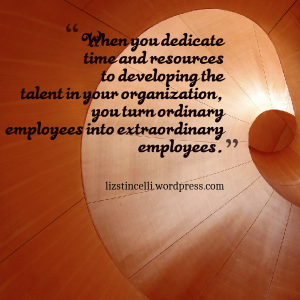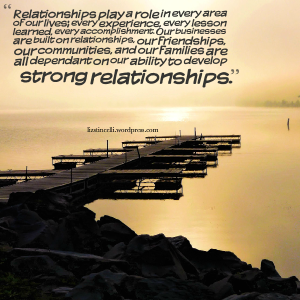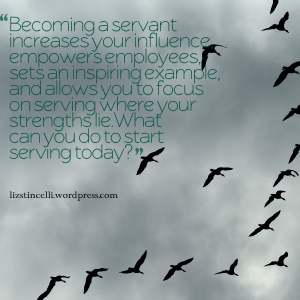By Doug Dickerson and Elizabeth Stincelli
“Don’t believe what I say. Believe what I do.” —Carlson Ghosn
Two psychiatrists meet at their 20th college reunion. One is vibrant, while the other looks withered and worried. “So what’s your secret?” the older looking psychiatrist asks. “Listening to other people’s problems every day, all day long, for years on end, has made an old man of me.” “So,” replies the younger looking one, “who listens?”
That humorous story reminds us as leaders of not just the necessity of listening but of the importance of how we communicate. It’s not so much what we say that’s important but that we are leaders who understand why our people should listen to us in the first place.
If your people are tuning you out and not believing what you say then your leadership is on life-support. Knowing the symptoms is the first step in turning things around. If your people don’t believe a word you say then here are six reasons why.
You are self-centered
If you are a self-centered leader your people will not believe you because you are only looking out for yourself. When decisions are made based upon what is best for you –what makes you look good- then you are using your people. Self-centered leadership tends to be manipulative and puts what is best for you above what is best for the team. If you are a self-centered leader you’d better wake up before it’s too late. One day you will look around and you’ll discover that not only are your people not believing you – they are not following you either.
You are inconsistent
Inconsistent actions produce inconsistent results. The flow and continuity of your leadership is essential to your success. If you say one thing and do another then those very actions will lead to mistrust and will marginalize your leadership. Flexibility is a must for any team moving forward. Unexpected things happen and your people will have to learn to go with the flow. But if you are inconsistent in terms of what you communicate or how you treat them it will be impossible for them to move forward or have faith in your leadership.
You don’t have their backs
Nothing will empower your team faster than having the backs of your people. A good leader knows this. But your people will not believe you if your message to them says “I have your back” yet you are nowhere to be found when they need you. When you empower your people and have their backs you create a momentum that can take your team to new levels of success. Don’t squander the drive, motivation, and ingenuity of your people by failing at this one critical element of your leadership. If you have the backs of your people they will have yours.
Your ego is front and center
If, as a leader, your ego is front and center, your employees won’t believe a word you say. Your ego can prevent you from seeing the world as it really is; you begin interpreting reality through your own biased lens. When your ego is front and center you send the message that your opinion is the only one that matters. Soon your employees, tired of hearing about how you know everything, will stop listening to you at all.
You lead with fear
If you lead with fear you will never earn the trust of your employees and they won’t believe a word you say. Fear stimulates the fight or flight response. In this state of mind, there is no higher-level cognitive thinking. When you lead with fear your employees disengage and become more focused on protecting themselves than what you are saying. Your attempt to control your employee’s behavior through fear will result in distrust and will undermine your ability to share your message and vision.
They don’t feel valued
Our success is deeply intertwined with our ability to collaborate. When your employees don’t feel valued they lose interest in continuing to try to contribute to the team. They withdraw and you lose the value of their unique skills and knowledge. Your employees need to have a voice and to have their individual contributions recognized and valued. Communication is a two-way street and when your employees don’t feel valued, you lose their respect which has a negative impact your ability to communicate and influence as a leader. When your employees don’t feel valued they won’t believe a word you say.
The key to leadership is trust and influence. If your people don’t believe a word you say, you have lost your ability to lead. It’s time to evaluate your leadership. Is your leadership self-centered or inconsistent? Do you have your employee’s backs? Is your ego front and center? Are you leading with fear? Do your people feel valued? Answer these questions honestly, make a change, and start leading today.
####
© 2015 Doug Dickerson and Elizabeth Stincelli
Doug Dickerson is an internationally recognized leadership speaker, columnist, and author. For more information about his books and speaking engagements visit Dougdickerson.wordpress.com
Elizabeth Stincelli is passionate about recognizing and inspiring the leader in each of us. She is the CEO of Stincelli Advisors where she focuses on helping organizations engage employees and improve organizational culture. Elizabeth holds a Doctor of Management degree with an emphasis on organizational leadership.
Learn more about Elizabeth by visiting her website, stincelliadvisors.com and connect with her on Twitter @infinitestin, Google+, and LinkedIn. You can contact her by email at stincelliadvisors@gmail.com.


